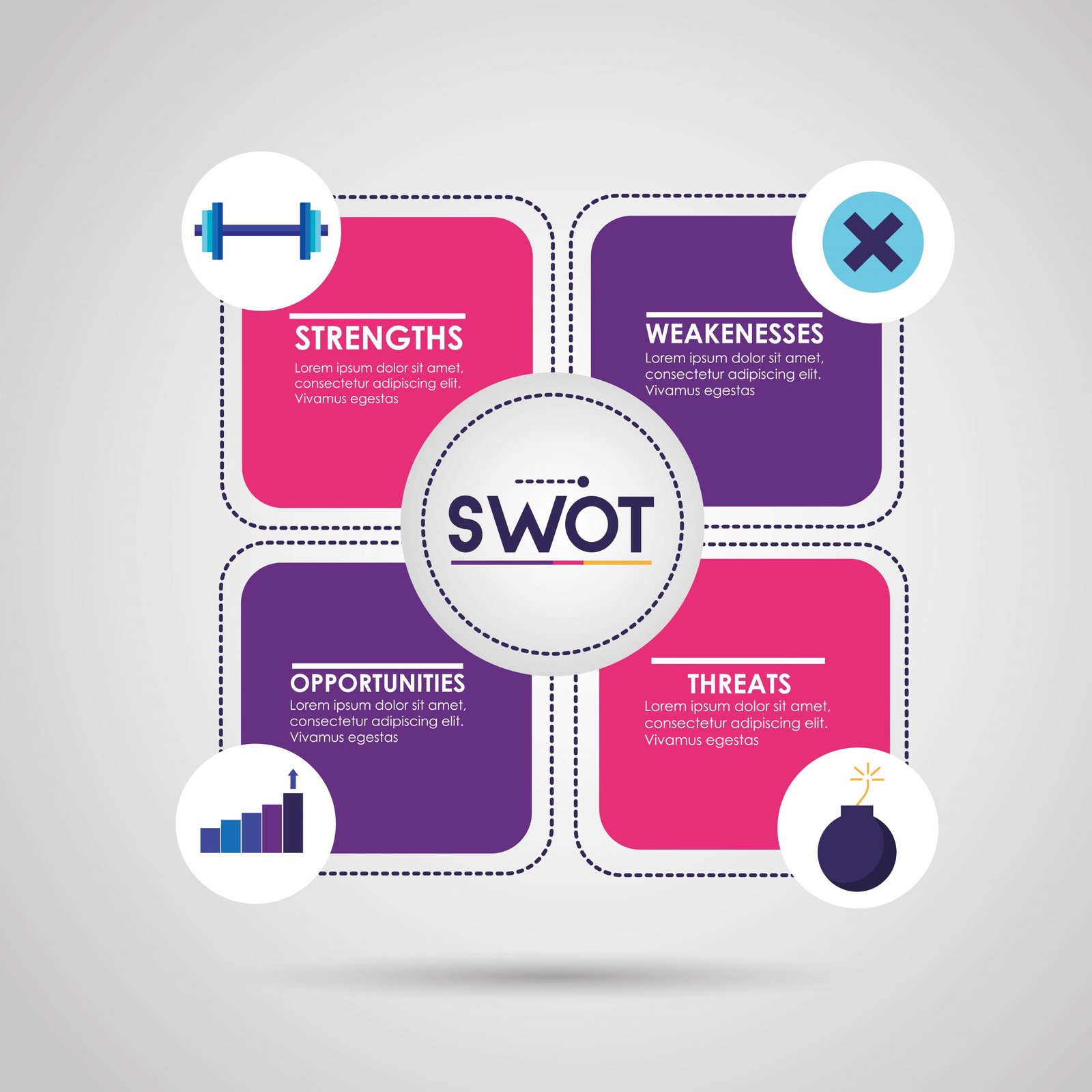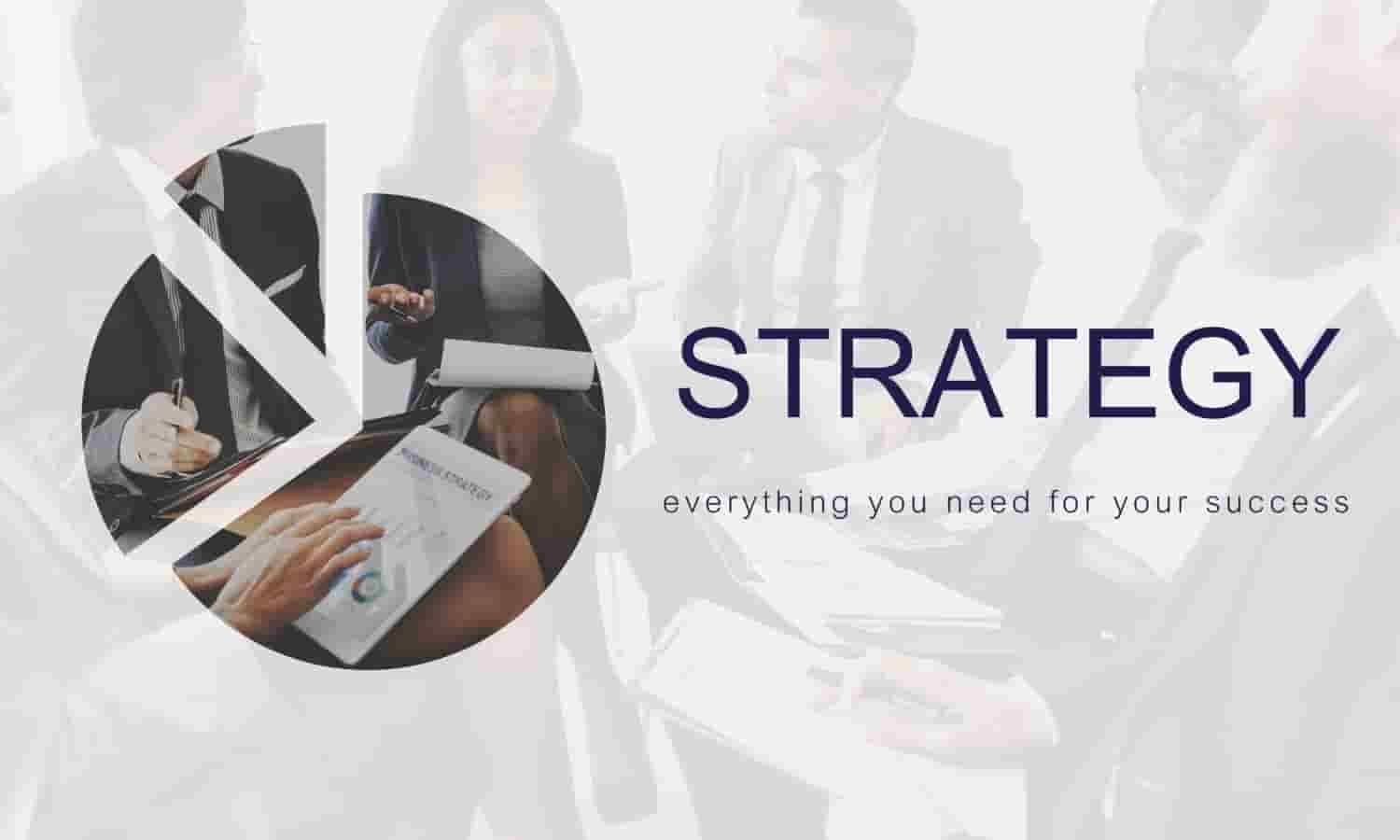Definition and Concept
SWOT analysis is a strategic planning tool used by businesses and organizations to identify their Strengths, Weaknesses, Opportunities, and Threats. This acronym, SWOT, provides a structured way to assess both internal factors (Strengths and Weaknesses) and external factors (Opportunities and Threats) impacting an organization’s performance.
Importance and Purpose
The purpose of a SWOT analysis is to gain a clear understanding of an organization’s current condition. It provides insights that help in decision making, strategic planning, and identifying areas of improvement.
Elements of SWOT Analysis
Strengths
Strengths refer to the internal positive attributes of a company or organization. They are the resources, capabilities, or competencies that give the organization an advantage over its competitors. Strengths are the things that the company does particularly well, or in a way that distinguishes it from its competitors.
- Strong Brand Reputation: This is one of the most powerful strengths a business can have. It means that customers trust your business and feel good about buying your products or services. A strong brand reputation can provide a significant competitive advantage.
- Loyal Customer Base: A loyal customer base is crucial for long-term success. These customers keep coming back for more and often act as brand ambassadors, spreading positive word-of-mouth about your business.
- Unique Intellectual Property: If your business owns patents, copyrights, or trademarks that are unique to your industry, this can serve as a significant strength. These protect your products or services from being copied by competitors.
- Efficient Supply Chain: Having a well-managed and efficient supply chain can greatly improve a business’s ability to meet customer demands. It ensures that products are delivered on time and can lead to cost savings.
- Talented Workforce: A skilled, dedicated, and experienced workforce is a key strength for a business. Talented employees can drive innovation, maintain high levels of customer service, and increase efficiency.
- Financial Resources: Having strong financial resources allows a business to invest in new opportunities, withstand periods of financial downturn, and meet all of its financial obligations on time.
Weaknesses
Weaknesses are the internal factors that hinder an organization from achieving its objectives. They are the areas where the organization lacks strength or has inferior capabilities compared to competitors. Acknowledging and addressing these weaknesses can significantly improve a company’s performance and competitiveness.
- Lack of Expertise: If your business lacks expertise in a particular area, it can affect your ability to compete effectively. This can be the result of not having enough skilled employees, lack of experience in the market, or gaps in technical abilities.
- Limited Resources: Limited resources can be a significant weakness for a company. This can include financial resources, human resources, technological resources, or physical resources. If resources are insufficient, it can limit the company’s ability to meet its objectives.
- Poor Infrastructure: Infrastructure is vital for any business. If a company has poor infrastructure, such as outdated technology or inadequate facilities, it can hinder productivity and efficiency.
- Weak Brand Recognition: If your business is not well-known or not positively perceived in the market, this can be a considerable weakness. It can limit your ability to attract customers and can make your business vulnerable to competition.
- Low Employee Morale: Low morale among employees can lead to decreased productivity and high turnover rates. A dissatisfied workforce can significantly impact a company’s ability to deliver quality products or services.
- Inefficient Processes: If your business has inefficient processes or workflows, it can lead to wasted resources, delays, and errors. Streamlining these processes can greatly improve productivity and performance.
Opportunities
Opportunities are external factors in the environment that a company or organization could potentially leverage to its advantage. They are conditions that, if exploited effectively, could provide a strategic advantage for the organization.
- Market Trends: Changes in the market, whether it’s shifting consumer preferences or emerging trends, can present opportunities for businesses to introduce new products or services, or tap into new customer segments.
- Technological Advancements: Technological innovations can lead to opportunities for businesses that are prepared to adapt and evolve. It could be through improving operational efficiency, creating new products, or enhancing customer service.
- Demographic Shifts: Changes in demographics, such as age distribution, population growth, or urbanization, can create new opportunities for businesses. These changes can influence consumer needs and wants, presenting opportunities for businesses to meet these new demands.
- Changes in Customer Behavior: If a business can identify and respond to changes in customer behavior quickly, it can gain a competitive edge. For example, the recent shift towards online shopping presents opportunities for businesses to develop robust e-commerce platforms.
- Regulatory Changes: Sometimes, changes in regulations can open up new opportunities. For instance, the legalization of certain products or services in a region could provide businesses with a new market to enter.
- Global Expansion: As businesses become more global, there are opportunities to enter new geographic markets, reaching new customers and diversifying the business.
.
Threats
Threats are external factors that pose a risk to the stability and survival of an organization. They could arise from a variety of sources, including economic events, changing market dynamics, or unfavorable government policies. Recognizing these threats can help an organization devise strategies to mitigate their impact.
- Increasing Competition: Rising competition in the market can pose a significant threat to a business. Competitors might offer superior products or services, lower prices, or a better customer experience, making it harder for your business to retain its market share.
- Regulatory Changes: Changes in laws or regulations can negatively impact a business. For instance, increased environmental regulations might force a manufacturing company to alter its production process, leading to increased costs.
- Economic Downturns: Economic downturns or recessions can lead to lower consumer spending, negatively affecting a business’s revenue. Additionally, these situations can lead to higher unemployment rates, reducing overall market demand.
- Negative Public Perception: Negative public opinion or bad publicity can damage a business’s reputation, leading to a loss of customer trust and potentially decreasing sales.
- Technological Disruptions: Rapid advancements in technology can render a business’s products or services obsolete. Companies that fail to adapt quickly to technological changes can find themselves left behind.
- Supply Chain Disruptions: Disruptions in the supply chain, whether due to natural disasters, political instability, or supplier bankruptcy, can pose a significant threat to businesses that rely heavily on smooth supply chain operations.
Conducting a SWOT Analysis
Gather a Team
The first step to perform a SWOT analysis involves gathering a team with different perspectives. This diversity helps in generating a comprehensive view of the business.
Brainstorm
The team collectively brainstorms to identify the strengths, weaknesses, opportunities, and threats. Each element is discussed and listed without bias.
Analyze and Interpret
The identified factors are then analyzed and interpreted in relation to the organization’s goals. This step aids in determining strategies to leverage strengths, overcome weaknesses, exploit opportunities, and mitigate threats.
Benefits of SWOT Analysis
Strategic Planning
SWOT analysis is integral to strategic planning. It provides a clear understanding of where the business stands, facilitating effective planning for future growth.
Risk Management
By identifying potential threats, SWOT analysis aids in proactive risk management. It enables businesses to prepare contingency plans to deal with possible future challenges.
Decision Making
The insights from a SWOT analysis guide decision making at all levels. It helps in selecting the right strategies and initiatives that align with the organization’s strengths and opportunities while considering its weaknesses and threats.
Limitations of SWOT Analysis
Subjectivity
A significant limitation of SWOT analysis is its subjective nature. The quality of analysis greatly depends on the perspective and bias of the participants.
Over-simplification
SWOT analysis can sometimes oversimplify complex strategic issues, which might lead to poor decision-making. It’s crucial to complement it with other analytical tools for a comprehensive view.
Dynamic Business Environment
The business environment is dynamic and changes rapidly. A SWOT analysis provides a snapshot of a particular time, and the findings may not remain valid for long.
Conclusion
A SWOT analysis is a powerful tool for strategic planning and decision-making. While it has its limitations, its value in identifying the internal strengths and weaknesses and external opportunities and threats of an organization is undeniable. It provides crucial insights that help organizations navigate their path towards success.
FAQs
1. What is the main purpose of a SWOT analysis?
The main purpose of a SWOT analysis is to identify and understand the internal strengths and weaknesses and external opportunities and threats of an organization. It aids in strategic planning and decision-making.
2. Who should conduct a SWOT analysis?
A diverse team with different perspectives should conduct a SWOT analysis to ensure a comprehensive view of the business.
3. Can SWOT analysis be used for personal development?
Yes, SWOT analysis can be used for personal development. It helps individuals identify their strengths and weaknesses, and recognize opportunities for growth and potential threats.
4. How often should a SWOT analysis be conducted?
There’s no fixed timeline, but it’s generally good practice to conduct a SWOT analysis annually or whenever there are significant changes in the business environment.
5. What should be done after a SWOT analysis?
After a SWOT analysis, the findings should be used to formulate strategies that leverage strengths, address weaknesses, exploit opportunities, and mitigate threats.








